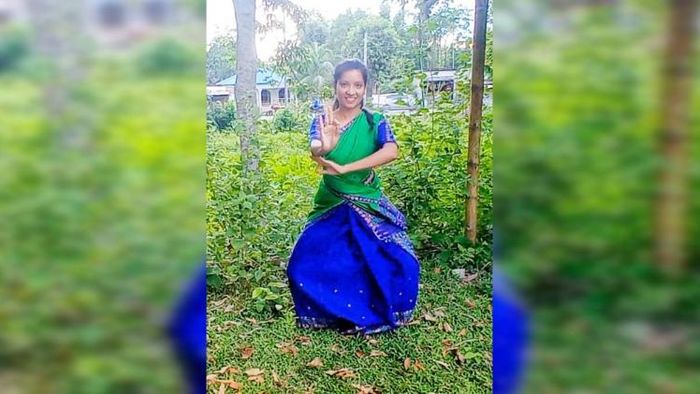Bangladeshi girl to perform Angkiya Bhaona in Assam’s Golaghat district
Tanaya Farhana Jeshmine, a muslim girl from Bangladesh will perform Ankiya Bhaona in Assam’s Golaghat district. Farhana will play the role of Gopi and Naag Patni, in Angkiya Bhaona "Kaliya Daman", which will be held at Sati Sadhani Kalakshetra in Golaghat on July 31.

- Jul 30, 2022,
- Updated Jul 30, 2022, 11:00 AM IST
Tanaya Farhana Jeshmine, a muslim girl from Bangladesh will perform Ankiya Bhaona in Assam’s Golaghat district. Farhana will play the role of Gopi and Naag Patni, in Angkiya Bhaona "Kaliya Daman", which will be held at Sati Sadhani Kalakshetra in Golaghat on July 31.
Farhana along with two youths from West Bengal, Biraj Roy and Sanjeev Kuddu came to know about Sattriya culture on Facebook when Shreemoyee Bora, a Sattriya culture practitioner of Golaghat, shared the lead character of "Parijat Haran" Bhaona in her spare time on lockdown period.
Biraj Roy contacted Shreemoyee Bora to learn about Satriya culture and was fascinated by Sattriya culture. He along with his two friends Sanjeev Kuddu and Tanaya Farjana Jeshmine got trained by Shreemoyee Bora through online classes.
Sattriya dance has its origin in the ‘Sattras’ established by Mahapurush Srimanta Sankardev in the 15th and the 16th century. The Sattras were established for the propagation of Vaishnavism and later they became the religious, cultural and social hub for the people of Assam. The great Vaishnavite Saint has developed this dance form with its basic roots aligned with the characteristics of other forms of Indian classical dance. Initially a part of the ‘Ankia Naats’, this dance form derived its name from the word ‘Sattra’ .This dance form was originally performed in the Sattras and the Namghars by the male Bhokots as a part of religious rituals and for spreading the philosophy of Vaishnavism and was confined within the four walls of the sattras for several centuries.